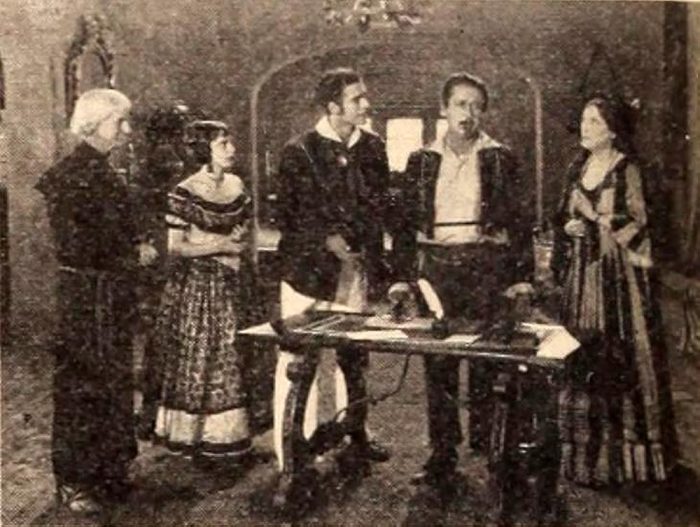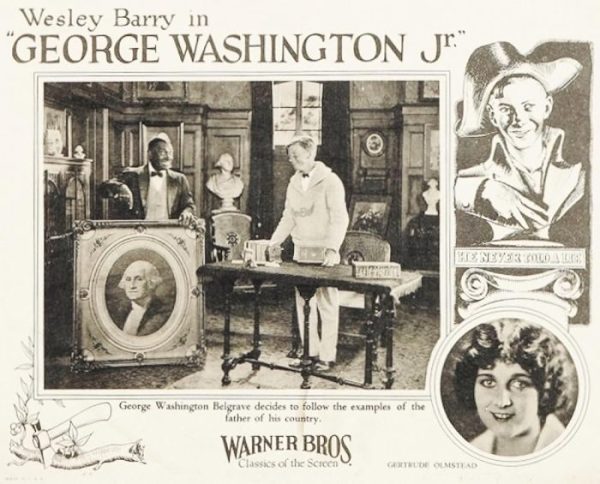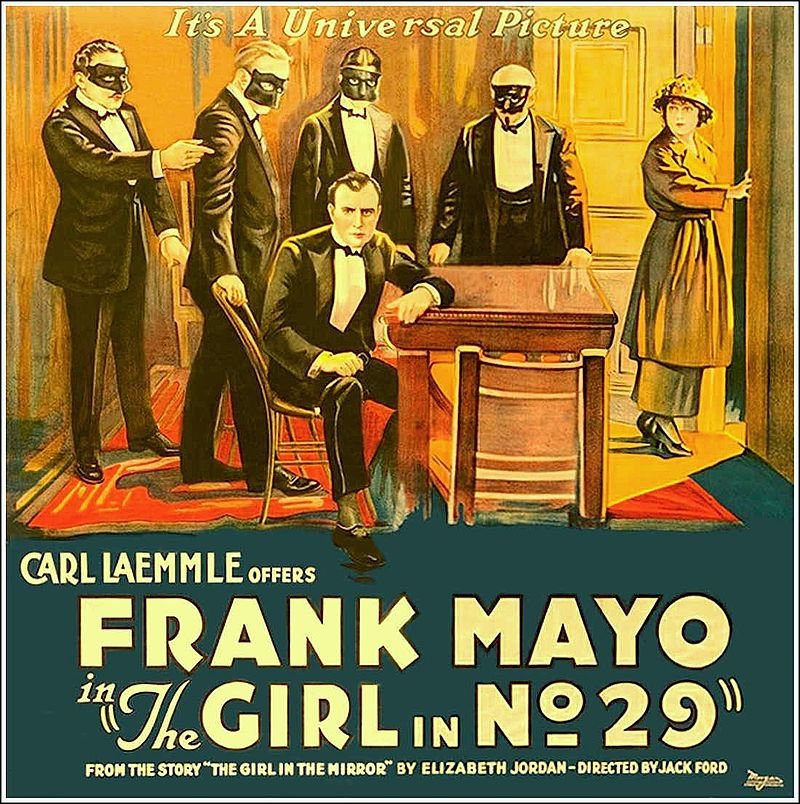black and white
Flick Friday: The Heart Of Wetona 1919

One hundred, five years ago, today, the silent, adventure film The Heart Of Wetona was released. Directed by Sidney Franklin, it was written by Mary Murillo, basing it on a theatrical work by George Scarborough. Produced by Joseph M. Schenck, it starred Norma Talmadge (as Wetona), Fred Huntley, Thomas Meighan, Gladden James, F. A. Turner and Charles Edler.
“After the half-breed daughter of a Comanche Chief falls for a young engineer who deserts her, she turns to a white Indian agent who marries her.”
IMDb Short
“Wetona, the daughter of Indian Chief Quannah and a white mother, returns to her tribe after an education in a white school in the East, [only] to find herself torn between the two cultures of her heritage.”
IMDb Storyline
“The film tells the story of some Comanche Indians and their preparations for a Corn Dance. The father of Wetona finds out she loves a white man.
Wikipedia Plot
♦ Heart Of Wetona (World War One era song, sung by Wetona’s soldier)
Complete Movie
Flick Friday: [The] Forbidden Lover 1923

One hundred years, ago, today, the black & white silent film [The] Forbidden Lover was released. Brackets around “THE” is a product of the differences of the title from data sources. This film is an edited version of The Power of Love, the very first 3-D movie, released on September 27, 1922 at the Ambassador Hotel Theater in Los Angeles. Both films are believed lost.
Directed by Nat G. Deverich and, written by Kate Corbaley & Caroline Crawford, it starred Elliot Sparling, Barbara Bedford, Noah Beery, Aileen Manning, Albert Prisco and John Herdman.
Yankee sea captain lands on the coast during the old Spanish days to trade with the ranch owners. He meets a girl who is betrothed to a man she loathes. After a series of adventures and narrow escapes, he shows up the unscrupulous ranch owner and wins the girl.
IMDb [The] Forbidden Lover Storyline
Motion Picture News Booking Guide
October 1923
Production Company: Sierra Productions
Tagline: A Romance Of Early California

The Power Of Love
Image Credit: IMDb & Amazon
Because of his financial trouble, Don Almeda promises his daughter, Maria, to Don Alvarez but, Maria does not love [him]. In fact, she falls in love with Terry O’Neil, a stranger who has been wounded by robbers associated with Alvarez. O’Neil takes Alvarez’s place at a masked ball. Alvarez, in turn, robs the old Padre of some pearls and stabs him to death with O’Neil’s knife. He then accuses O’Neil of the murder and tries to shoot him but, wounds Maria instead, having thrown herself in front of him. Maria recovers and, after proving that Alvarez is a thief and a killer, weds O’Neil.
IMDb The Power of Love Storyline
Moving Picture World
October 1922
Production Company: Perfect Pictures
Tagline: A pair of spectacles will be handed to you as you enter the theatre, through which you will view the new sterescopic pictures.
The Power of Love was screened in front of a live audience at the Ambassador Hotel Theater […]. It was projected dual-strip in the red/green anaglyph format, making it both the earliest known film that utilized dual strip projection and the earliest known film in which anaglyph glasses were used. The camera rig used to shoot the film was made by the producers themselves and as you can imagine, it was far from perfect. Simply put, the film was not a success. It was screened, again, for exhibitors, and press, in New York City and, then, almost immediately fell out of sight. It was not booked again by other exhibitors. Unfortunately, we may never see what this movie looked like.
3-D TV & Movies
The first stereoscopic image dates to 1844, which makes 3-D images as old as the art of photography. [No] less a personage than Queen Victoria was photographed in 1854 in stereoscopic 3-D. 3-D stereoscopic moving images date to the 1850s with what was called the Kinetamatoscope [sic]. The first public display of a 3-D movie came in 1922 with The Power of Love […]. The film received a decent review in Moving Pictures World, then promptly disappeared from history by changing its title to Forbidden Lover and touring the country in a 2-D version. It was too complex and costly at the time to take 3-D on the road.
Randome
Looking Up/My Daily Plant Blogspot (Blogger)
Cirque de 3-D
March 6, 2009
What Was The First 3D Movie? (3D TV & Movies/Web Archive/06-02-2011)
A Tour Through The History Of 3-D Movies (Reelz/Jeff Otto/01-22-2009/Web Archive/07-20-2012)
Forbidden Lover (Silent Era/06-08-2013)
The Power of Love (Silent Era/10-16-2011)
Forbidden Lover (TCM)
The Forbidden Lover (AFI Catalog)
The Power of Love (AFI Catalog)
The Shot Of The Year (The Dissolve/Calum Marsh/12-19-2014)
TV Tuesday: Friday The 13th 1957

Sixty-five years ago, today, the British comedy Friday the 13th aired on BBC1. There is very little information on this thirty minute broadcast. It’s simple storyline states:
Ted Ray presents a lighthearted look at superstitions.
Written by John Junkin and Terry Nation, produced by George Inns, the only cast listed is Ted Ray and June Whitfield. IMDb states that it was shown in black & white. The British Comedy Guide reflects “colour.” As best as I can tell, it aired at 7:30pm and it definitely was on a Friday the 13th.
I love British comedy. I wish I could find a YouTube clip or some still photographs. There is just nothing, other than a vague Internet memory of its existence. ~Vic
Movie Monday: Suffrage And The Man 1912

One hundred, ten years ago, today, the B&W silent, short comedy film Suffrage and the Man was released. Produced by the French company Eclair, in conjunction with the Women’s Political Union, its original title was Suffrage Wins Herbert.
A young man learns that his betrothed is leaning toward the suffragette cause. He remonstrates with her father to be told “My butler and my bootblack may vote, why not my wife and daughter?” He cannot agree, however and their quarrel brings about a broken engagement. Disappointed and unhappy, he seeks forgetfulness by going to a summer resort. There, he succumbs to the wiles of a designing mother and, caught in an embarrassing position, her daughter “feinting a faint” in his arms, he permits their engagement to be announced. He learns, by an accidental eavesdropping, of the mother’s trickery. He loses no time to denounce the deception and withdraw his offer of marriage. The mother and daughter promptly start suit tor breach of promise. In the meantime, votes have been won for women. The trial of the suit comes up before a mixed jury of men and women with the old sweetheart as forewoman of the twelve peers. Their verdict is acquittal and, as might be expected, “Suffrage Wins Herbert” with a permanently happy result in his reconciliation and marriage.
IMDb Summary
Written by: Moving Picture World
According to Silent Era, the director is unknown, the cast is unknown and the film’s survival status is unknown. There is one trivia bit…it is based on a story written by playwright Dorothy Steele. ~Vic
Movie Monday: Why Pay Rent? 1935

Eighty-five years ago, today, the black & white short comedy Why Pay Rent? was released. Directed by Lloyd French and, co-written by Dolph Singer & Jack Henley, it starred Roscoe Ates, Shemp Howard, Billie Leonard, Ethel Sykes and Ron Le May.
Elmer (Roscoe Ates) fixes up a room for his just-married, freeloading brother-in-law and wife. When the newlyweds show up, Henry (Shemp Howard) brings a surprise in the form of stepson Junior. The apartment is now too small so, Henry decides that they’ll buy a lot and build a do-it-yourself home, a disaster in the making when Junior switches the house’s part numbers. It doesn’t help matters that Elmer, Henry and the wives are all incompetent.
In the 1930s, the Vitaphone division of Warner Brothers made a bunch of very uninspired and, often, unfunny comedy shorts. One of them, Why Pay Rent? is a bit like One Week (with Buster Keaton) but, only if the folks building the house were dumber than a pile of bricks. In many ways, this might have worked better as a Three Stooges short, which is interesting because Shemp Howard stars in this one, as well as Roscoe Ates, an incredibly unfunny comedian whose shtick was stuttering…which was annoying rather and cruel.
This film isn’t listed as lost but, I couldn’t find any video clips of it. I did find some stills of Elmer painting himself into a corner on Getty Images. ~Vic
Trivia Bit:
♦ Some of the construction sight gags, including the final scene, were re-done two years later by Moe, Larry and Curly in The Sitter Downers.
Additional Reading:
Shemp Howard Review (DVD Talk)
Why Pay Rent? (IMDB)
Why Pay Rent? (1935) (The Three Stooges Online Filmography)
Flick Friday: The Cheyenne Kid 1930

Ninety years ago, today, the obscure, low budget, black & white western film The Cheyenne Kid was released. Directed and co-written by Jacques Jaccard, it starred Jay Wilsey, Joan Jaccard (Catherine Dirking), Yakima Canutt (co-writer & stuntman), Jack Mower and Frank Ellis.
Buck Allen, The Cheyenne Kid, has been accused of holding up the payroll car of the Cody Dam Construction Company and is being pursued by U.S. Marshal Utah Kane and, Sheriff Hank Bates but, they lose him. Buck proceeds to the home of Betty Thorpe, where he meets Duke Porter, who is posing as his friend. [Duke], who advised him that, by running away from the law, he can keep out of jail and force the guilty party to confess. Hiding in the barn, he hears a conversation between Gorman and Madge. [H]e leaps to the floor as Gorman runs out. Gorman shoots at him but, hits Madge instead. The Marshal and Sheriff ride up and Buck, knowing that Madge needs medical attention, gives himself up and, is jailed. Marshal Kane believes that Buck is innocent and is on the hunt for the guilty party but, allows the sheriff to believe that Buck is guilty. Kane has the sheriff bring Gorman to the jail and, tells Buck and Gorman of an old Indian legend that, when two people are given one weapon between them, the survivor will be the innocent party. He throws a bull-whip between them and says that is the weapon.
In the trivia section, there is one entry:
This film is presumed lost. Please check your attic.
Additional Reading:
The Cheyenne Kid (Allmovie)
About Jay Wilsey (The Old Corral B-Westerns)
Shutterbug Saturday: Snow Pix
We’ve had cold temps here and plenty of rain but, the two haven’t combined to give us any frozen precipitation. Don’t me wrong. I’m not complaining. I like a good snow storm, here and there but, I don’t like the mess. That being said, since we haven’t had any of the white stuff, I submit…for your approval…some pix I harvested from a FakeBook group back in 2018, when we had two snow bombs. I posted my own photos on December 9, 2018 and added some of my stuff to the same group. These are really good and photographer credit is listed. I will post the rest, tomorrow. ~Vic





Movie Monday: The Brash Drummer & The Nectarine 1914

One-hundred, five years ago, today, The Brash Drummer and The Nectarine was released. A short, silent, black & white comedy, it was written and directed by George Ade, a popular American humorist for his time and a follower of Mark Twain. Starring Wallace Beery and Bevery Bayne, this piece was one of Ade’s Fables in Slang.
Summary:
Gabby Gus made the town regularly every month. He was a swell guy and thought he could cop most any Jane that he took a liking to. Clara Louise Willoughby, a farmer’s daughter with a pretty face and figure, took the salesman’s eye. He looked the old gent up in Dunn and Bradstreet and, discovered that the old boy was worth some coin. Then, he set his traps for the daughter. Dad, however, sent her away to boarding school and when she returned, she was the swellest peach in the orchard. They all fell for her. Gus hastened to her home where he discovered she was some lemon when it came to the country stuff and that she was a real ‘highfalutin’ society butterfly now. […] her aspirations were higher than a poor hick drummer. She made him feel awfully small. [Source]
I can’t find a video clip of this film but, I did find Ade’s Fables in Slang in audio book form. It has 26 stories and was published in 1899. [Disclaimer: It is nearly two hours long.] ~Vic
Movie Monday: It Should Happen To You 1954

Sixty-five years ago, today, the most popular film at the box office was It Should Happen to You. I am changing my wording from “#1” to “most popular” as I am having great difficulty determining if my “older movie” posts are actually number ones. It is hard to tell.
Starring Judy Holliday, Peter Lawford, Jack Lemmon and Michael O’Shea, this romantic comedy (Rom-Com) was written by Garson Kanin, directed by George Cukor, was originally titled A Name For Herself and was supposed to be a Danny Kaye movie.
Holliday is Gladys Glover of Binghamton, N.Y., who has come to N.Y.C. to make a name for herself and does so by plastering her moniker across a Columbus Circle billboard.
Gladys Glover has just lost her modelling job when she meets filmmaker Pete Sheppard shooting a documentary in Central Park. For Pete, it’s love at first sight but, Gladys has her mind on other things…like making a name for herself. Through a fluke of advertising, she winds up with her name plastered over 10 billboards throughout city. Suddenly, all of New York is clamoring for Gladys Glover without knowing why and playboy Evan Adams III is making a play for Gladys that even Pete knows will be hard to beat.
Trivia Bits:
♦ This film was the début of actor Jack Lemmon.
♦ Teenage John Saxon has an uncredited cameo in Central Park.
♦ Gossip columnists reported that during the filming of It Should Happen to You, Holliday dated her co-star Peter Lawford. The actress was having marital problems at the time and did, reportedly, enjoy a romantic fling with Lawford (it only lasted until the production wrapped) which may be why their scenes together have a genuine spark.
♦ The same year of the movie release, co-star Peter Lawford married Patricia Kennedy, daughter of Joseph P. Kennedy and sister of the future President. Of the extended Kennedy clan, Lawford was closest to his brother-in-law Robert.
Nominations
♢ Best Costume Design/Black & White (Jean Louis/1955 Academy Awards)
♢ Best Written American Comedy (Garson Kanin/1955 Writer’s Guild of America (WGA) Award)








